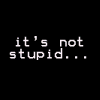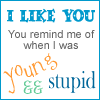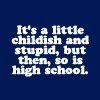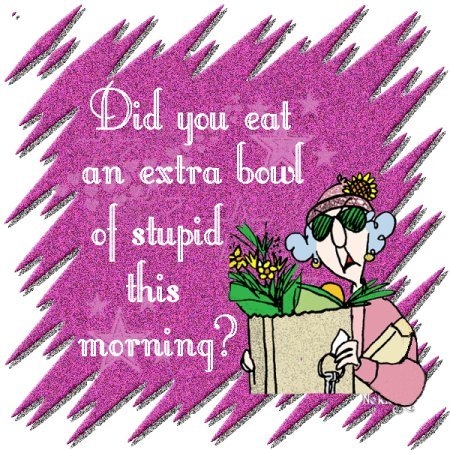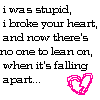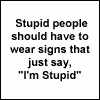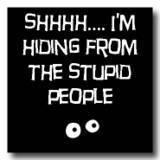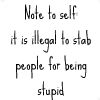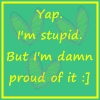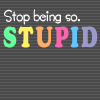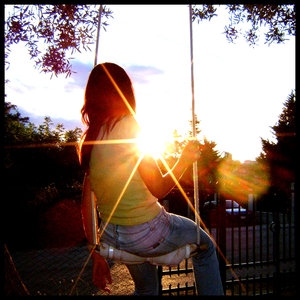Michaelsne Family Library On COMPARATIVE STUDY IN TRADITION CHINESE MEDICINE 中医西医诊断与治疗综合



欢迎您作为我的好朋友到这里一起学会医学!!!! 欢迎您作为我的好朋友到这里一起学会医学!!!!!

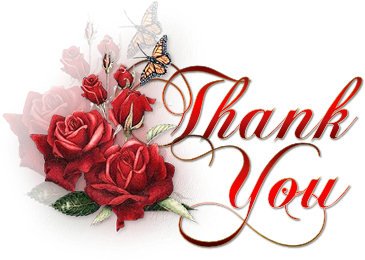
我是一位退休医疗人员,我希望與世界的人民分享我的35年醫療经验o 因此在我這些網站我介紹和供應給大家一套全备中西医療材料包括錄影o适用于大學医生和學生。目的是促進大家學習,實踐并且研究。歡迎您經常使用! 挽救生命,开发中西医療和發展优秀中医治用文化。 是我們最高尚的義務使命。書簽! 告诉您的朋友,老師,講師,科學家,父母和医生o 我設定了以下網站:給大家每日保持健康和病症參考用途。 我的健康網站。http://healthmichaelsne.blogspot.com/ 生化網站http://biochemvideo-michaelsne.blogspot.com/ 血液和心臟系統錄影網站 . http://cardiacvascular-michaelsne.blogspot.com/ 呼吸系統錄影網站 . http://pulmonaryvideo-michaelsne.blogspot.com/ 消化系統錄影網站 . http://digestionvideo-michaelsne.blogspot.com/ 尿和性系統錄影網站http://urigenitialvideo-michaelsne.blogspot.com/ 細胞組織學錄影網站http://histologyvideo-michaelsne.blogspot.com/ 病理學研究錄影網站 . http://pathologyvideo-michaelsne.blogspot.com/ 醫治用的網站。http://healingmichaelsne.blogspot.com/ 西醫醫治學錄影 . http://medicvideooutreach-michaelsne.blogspot.com/
TCM-michaelSNE. The Ancient Chinese Health Wisdom
我是一位退休医疗人员,我希望與世界的人民分享我的35年醫療经验o 因此在我這些網站我介紹和供應給大家一套全备中西医療材料包括錄影o目的是促進大家學習,實踐并且研究。适用于大學医生和學生o歡迎您經常使用! 挽救生命,开发综合治疗和發展中医 這是我們最高尚的義務使命o谢谢在一起收集珍贵的友谊和知识o
Wednesday, May 13, 2009
猪流感症状和预防。 可能的大流行病。swine flu symptoms and prevention. possible pandemic.
swine flu symptoms and prevention. possible pandemic .
Saturday, May 2, 2009
猪热流病 Swine flu H1N1:Formula of six Chinese herbs and one western herb for Anti-viral.
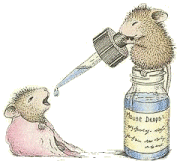
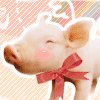

专家纷纷支招抗流感
广州中医药大学一附院中药预防处开的抗流感方。桑叶12克、菊花12克、北杏仁10克、枇杷叶12克、葛根15克、生薏仁15克、芦根15克、桔梗12克、连翘12克、大青叶15克、银花12克、甘草6克,上述中药材洗干净,用水浸过药面,武火煮沸15分钟就可以服用。
深圳中医院专家也为防甲型H1N1流感支招,开出了抗甲型H1N1流感汤配方,记者看到此处方:桑叶12克、菊花12克、北杏仁10克、枇杷叶12克、葛根15克、生薏仁15克、芦根15克、桔梗12克、连翘12克、大青叶15克、银花12克、甘草6克(如果只是预防则去掉杏仁和桔梗)。
两方所用药材一致,只有部分的药材增减稍有变化。
记者了解到,一些专家还针对不同症状的人群开不同的处方,针对体质壮实或平素烟酒过度的人群,药物组成:葛根15克、黄芩10克、藿香10克、生薏仁10克、生甘草5克。功效:清热化湿,透表达邪。用法:水煎服,每日1剂,连服3日。小儿酌减。针对体质虚弱或自汗易感冒的人群,可用黄芪20克、防风10克、白术10克、银花10克、生甘草5克。功效:寓清于补,防止苦寒伤中,并借宣发之品,振奋卫阳,抵御外邪。用法:水煎服,每日1剂,连服3日,小儿酌减,孕妇、脾胃虚寒者遵医嘱。
本文来自:求医网.
利用寒温统一理论辨治猪高热病.您可以登录: xxx
CM NEWS - 猪热流病 Swine flu outbreak has scared the world recently, with death toll reaching 100 and counting. While scientists are racing to understand the flu and in full effort to formulate a new vaccine against it, the only things ordinary folks like us can do is to keep ourselves healthy and strong to guard off infection. In traditional Asian medicine, a decoction called Ma Huang Tang ( Click=>麻黃湯) in Chinese or Mao-to in Japanese.
http://chinesemedicinenews.com/2009/04/28/common-herb-has-flavonoids-that/
Ma Huang Tang (麻黃湯) in Chinese or Mao-to in Japanese.
NaturalNews) The Heat Clearing Class of herbs is definitely not at all a Tonic Class but a true medicinal energy and direct healing classification of herbs. This Classification of herbs (as taught in the Shanghai College Of Traditional Chinese Medicine) has 5 sub classes -- see Chinese herb classification chart here: (http://plantcur.startlogic.com//Chi...) . Most of these powerful Anti Viral herbs mentioned in this article are from the "Heat Clearing – Detoxifying" and "Heat Clearing – Blood Cooling" sub classes.
In ancient times there was certainly no microscopic knowledge of germs and not even a scientific understanding of infections. There was, however an understanding of heat (Fever) and "toxins" (What ever they were) in the blood. What is so very interesting is the discovery of actual powerful germ killing, viral destroying actions that these herbs were later proven by science to have possessed.
There is a formula of six Chinese herbs and one western herb for Anti-viral use that I, as a Traditional Chinese Medicine (TCM) Clinical Herbalist, have had extremely good success with. This is the most powerful "across the board" anti viral formula I have ever seen or used. It is also effective against a broad range of germs and bacterial infections.
The Chinese herbs in this formula are:
* Ban Zhi Lian (Chinese Barbed Skullcap - whole plant)
* Xia Ku Cao (Chinese Prunella Vulgaris - Flower Spikes)
* Da Qing Ye (Isatas or Chinese "Woad" leaves)
* Mu Dan Pi. (Root bark of the Mountain Tree Peony)
* Jin Qian Cao (Chinese Coin Grass),
There is also a small amount of Gan Cao (Chinese Licorice Root) added to make the herbs work together better as a unit and to extend the length of their action.
The final herb used is not Chinese at all but the root of a Western Rocky Mountain plant called "Osha" (Ligusticum porteri).
Anyone with knowledge of Chinese herbs and of tincturing them can make this formula. The herbs are all used in equal parts except for Gan Cao (Chinese Licorice) which is about ¼ of a part (adding each together from separately tinctured herbal liquids). I must warn you; this tastes quite bad and is very bitter so I always recommend a glass of water or juice as a chaser! The dose can be a teaspoon to up to a tablespoon 2-3 times a day when working on first signs of an acute infection.
Let's take a look at these herbs one by one.
Ban Zhi Lian:
A True Heat Clearing herb, this Barbed Skullcap is now used in many modern Chinese formulas against cancer. The western use of Skullcaps are thought of mostly as a Nerve Relaxing herb (Which it does do a very good job at) but many people have failed to note it's knick-name often found next to it in many American herbals, "Mad Dog Weed". This is because of an early American success (Early 1800s - Dr. Van Derver) with it being used against the Rabies Virus in both animals and man, (http://www.henriettesherbal.com/ecl...) .
It turns out that most any of the many varieties of Skullcap around the world have a strong Anti-viral action. It also lowers fever quite effectively and can bring down seriously high blood pressure very quickly (in high doses).
Xia Ku Cao:
This Chinese Prunella Vulgaris is much more potent than it's American cousin (the flower spikes are 5-6 times longer for one thing). This is a strong heat clearing herb used to relieve fevers, headache, and high blood pressure. It is known for being highly effective in liver problems associated with jaundice and has been shown to work well against many forms of herpes.
Da Qing Ye:
This extremely powerful Heat Clearing herb is perhaps the most directly anti-viral (in the western way of thought) of the Chinese herbs. It was one of the first herbs to be used for removing "toxins of the blood" which was very close to an understanding of "germ theory" only 2,000 years earlier! Even the Traditional Chinese Teachings say its main indications are: "Epidemic febrile diseases with heat invading the blood". This herb has an extremely cold energy and a very bitter taste. Da Qing Ye is extremely fast acting and seems to help activate other herbs in formulas that contain it.
Mu Dan Pi:
This Heat Clearing root bark is also associated with epidemic febrile diseases of the blood and is now shown to be effective against a broad range of germs by modern science (as if we ever needed modern science). The part that science may never grasp is that the Yin and Yang energies of the body are often affected in diseases and this must be addressed. It is within these energies that herbal TCM works -- I just don't think they well ever get it.
In the case of Mu Dan Pi, this herb is most effective when the yin is damaged (noted by heavy night-time fever). This herb is also often used in normalizing Menstruation as its over all effect on the blood is very profound.
Jin Can Cao
This herb is not classified as a Heat Clearing herb but as a diuretic or "Herbs for Excreting Dampness". It is almost miraculous in its ability to remove and break up both urinary stones and gall stones. Its ability to remove large solids is a reflection of what it can remove on a microscopic scale as well. Although not fully understood how it works at this, it has been shown to relieve jaundice and normalize many liver conditions, especially those that are associated with viruses, including hepatitis C.
Osha:
The last major anti-viral herb in this formula is the American Osha Root. This is heat clearing but accomplished with heat itself through sweating. I, myself, was cured of a terrible reoccurring viral pneumonia with this herb and it was in fact the healing from this herb that caused me to make the decision to become an herbalist.
It is noted in a few old medical books (The ones that weren't burned) that many of the Arapaho Indians kept alive and well during the 1918 Flu Epidemic with the use of this herb and that they had cured quit a few white folks with it as well. You can bet the AMA did not want to hear that!
This "Viral Defense" formula
(http://plantcures.com/herbsforherpe...) is a real life saving treasure for anyone's medicine cabinet especially during a Flu epidemic. It is also one example of a great alternative to any of the new "Designer Viruses" with their "accompanying vaccinations". I would never fear any "Avian Flu" or anything else they would try to throw at us as long as I had this formula on hand.
Remember, this is not a "tonic" formula to boost the Immune system and protect you from what ever may come your way. There are other great things for that such as Reishi Mushroom and Huang Qi extract.
(http://plantcures.com/herbsforimmun...) .
"Viral Defense" is not to be taken daily on a tonic basis but only during the first signs of infection, when visiting someone with a very contagious disease, or to use semi-long term (2-3 months at a time) on a chronic infection. This is something to keep on hand to take at the first sign of a viral flu or illness coming on. It will almost always "knock it out" over-night if caught early. Also many people have had great success with it against Shingles, Hepatitis C, and such things as Genital Herpes and even a few extreme life threatening viruses. I have watched this formula completely cure the "Croup" in children and adults in 24 hours or less! This is indeed the perfect example of a very powerful extremely effective Chinese/Western herbal medicine.
Friday, April 3, 2009
治疗三叉神经痛:全龙汤,40多年的中医临床实践. 如何鉴别牙疼与三叉神经疼呢?
=================================================
三叉神经是分布在人头部两侧的感觉神经,分为三支,所以叫三叉神经。第一支是眼支,支配眼球以及眼球以上的一些部位,第二支叫上颌支,支配从眼裂到口裂之间的这段皮肤,包括鼻翼部等部位,第三支叫下颌支,支配下面部等部位,三叉神经疼可发生在上述这些区域里。发病使患者感觉到放射性的阵阵剧疼,如针扎、刀割、撕裂或电击一样,症状一旦发作往往令人难以忍受。因此三叉神经疼又被许多患者称“天下第一疼”。三叉神经疼发作时常有一个“扳机点”,一般在唇部、鼻翼、口角、牙齿、上腭、颊黏膜、眉毛等处,稍加触动即引起疼痛发作。由于害怕引起疼痛发作,病人常不刷牙、不洗脸、连吃东西都要小心翼翼,常以手势表达思想,也不敢让医生触碰。
据调查,有半数以上的患者常不停的揉搓来减轻发作时的疼痛,长时间就会造成面部皮肤粗糙、增厚、红肿、甚至感染、眉毛脱落等。
如何鉴别牙疼与三叉神经疼呢?
1、如服用了普通的止疼片后,牙疼不见好转,而吃了常规药物卡马西平后却有效果,那么则排除是牙周炎等炎症的疼痛,而是神经性疼痛。
2、在检查的过程中,如果没有发现龋齿、牙周炎等相关炎症,牙齿依然疼痛难当,那么有可能是
3、从疼痛特征上看,如果是牙齿炎症、慢性的疼痛是持续性的疼痛,如果是典型的三叉神经疼,在发作的时候是闪电般的剧烈疼痛,通常持续几秒钟,每天发作几次,却令人难以忍受。
三叉神经痛注意事项:
1.多食新鲜蔬菜,水果豆制类,瘦肉,食品以清淡为宜.
2.忌:生冷油腻刺激性食物,不易消化的食物.吃饭漱口,说话,刷牙,洗面动作宜轻柔,以免诱发板机点疼痛.
3.注意保暖,避免风寒侵袭,平时应保持情绪稳定,不宜激动,并适当活动,增强体质,常听柔和音乐,心情平和,保持充足睡眠
4.勿用冷水洗脸,遇风雨寒冷时,注意头,面部保暖
三叉神经痛//坐骨神经痛//肋间神经痛//面神经麻痹//带状疱疹后遗症神经痛
舌咽神经痛//神经性耳鸣//神经性耳鸣

Tuesday, March 31, 2009
中醫切脈的脈象有哪幾種?中醫切脈趣談.
中醫師替人治病,除望、聞、問之外,最觸目的一個舉動,便是替病人打脈;因此,不懂中醫理論的人,便往往誤會打脈是中醫診斷疾病過程中最重要的步驟,甚至誤會為唯一的步驟;也有一些以訛傳訛的說法,說古代御醫替宮中妃嬪治病,因受禮教束縛,大夫不能跟妃嬪見面,也不能有肌膚的接觸,切脈時,只以一條紅線牽引切脈,說得玄乎其玄,神化了切脈的重要性;但這決不可能是事實的。 切脈是中醫四診的其中的一個步驟,跟望、聞,問同等重要;切脈,就是檢查脈象。中醫對切脈很重視,並且積累了豐富的經驗。但是,切脈僅是中醫診斷方法之一,並非唯一的方法,我們必須綜合運用四診,才能全面了解和分析病情,得出正確的診斷。
切脈一般取近手腕部的橈動脈,分寸、關、尺三部按察,掌後高骨處定為關,關前為寸,關後為尺;切脈必須在病人安靜後才進行,病人手臂平放,手掌向上,醫生用食、中、無名指的指尖分別平按在寸、關、尺三個部位,用力則由輕到重,用浮取、中取、沉取三種手法,體會脈象的情況。 正常人的脈象,在安靜時每分鐘跳動60至80次,按之和緩均勻,稱為平脈。
中醫對脈象的分類精細,最多有28種脈象:
浮、沉、遲、數、滑、澀、虛、實、長、短、洪、微、緊、緩、芤、弦、革、牢、濡、弱、細、散、伏、動、促、結、代、疾;
但臨床常見的脈象大約有以下十種。粗淺分四:
一.浮:浮淺的意思,輕按即能感覺,見於外感諸病。
二.沉:與浮相反,深沉,輕按不明顯,重按才能觸到。
三.遲:即緩慢的意思,每分鐘60次以下為遲脈,見於寒證。
四.數:即快速的意思,每分鐘90次以上為數脈,見於熱證。
====================---------================================
以下轉載自" 脈診:中醫切脈趣談"
http://www.med66.com/html/2006/6/li11286313361660026012-0.htm
中醫看病,免不了要先摸摸患者手腕部的脈搏,俗稱切脈,亦稱脈診,切診。切脈,是醫生診察疾病的重要手段,更是中醫辨證的“拿手好戲”。 經驗豐富的中醫大夫,通過“按二指”,常能相當準確地判斷患者患病的部位和性質,推測疾病的進展和預後,窺察體內邪正盛衰等情況。 歷史上有關切脈的趣聞甚多,然而,切脈之術是誰人發明的呢?
相傳,距今2400多年前的春秋戰國時代,晉國上卿趙簡子有一次病例,昏迷不醒,眾人皆認為他死去。 請當時的名醫扁鵲判斷,扁鵲從趙簡子的手腕部按及還有微弱的脈跳,斷言未亡。 經他精心調治一周,終使趙“起死回生”。 又一次,扁鵲路過虢國,見舉國上下正忙於籌辦驅魔祛邪的祭祀。 詢問之後方知原來是虢國太子已斷氣半日。 扁鵲急上前察看,經摸脈搏、按體溫,斷定太子屬假死,其奄奄一息之態患的是“屍厥”(相當於現代醫學所說的休克)。 當即與弟子用針刺、熱慰之法搶救。 待虢太子醒來後,再以湯藥精心調治二旬告愈。 故後人普遍認為扁鵲是發明切脈察病術之鼻祖,正如西漢史學家司馬遷在《史記》裡所言:“至今天下言脈者,由扁鵲也”。
中醫的切脈術可謂博大精深,且頗靈驗。 但把它吹捧得玄之又玄,則莫過於歷史上宮廷醫官為皇親國戚的夫人千金們看病時的“牽線切脈”了。 據傳,清代慈禧太后有一次患頑疾,陳御醫就是在既不能目睹其神色、又不敢探問其病情的狀況下,隔著帷帳在紅綠絲線上切脈,後小心翼翼地開了三貼藥方。 太后服後,果然藥到病除,特賜予他“妙手回春”金匾一塊。 但牽線切脈畢竟屬故弄玄虛之舉,乃歷代醫官因受縛於封建禮教不得以而為之的騙技。 據傳,陳御醫晚年隱居後才敢透露當年為“老佛爺”牽線切脈成功獲重賞之事的內幕。 當他獲悉將召自己為慈禧看病的消息後,急忙變賣家產,重金賄賂太后身邊的內待、宮女,得知太后之病乃貪嗜螺肉所致食積頑症。 牽線切脈時,他先強裝鎮定,後心中有數地開出消食健脾的處方,終使“老佛爺”藥到病除,化險為夷。
其實,中醫診察斷病,素來須望、聞、問、切“四管齊下”———四診合參,才能準確地辨證施治,這是眾人熟知的常識。 至於中醫切脈的專著,當推晉代王叔和的《脈經》和時代李時珍的《瀕湖脈學》最馳譽中外。 順便一提,上世紀50年代以來,中醫的切脈術作為現代醫學科學研究的新項目,引起中外學者的關注,並已取得長足的進展。 如對檢測脈像儀器的研製、脈圖的描記、數據的分析、血循環與脈象的研究等都已取得重要的科研成果。
Monday, March 30, 2009
指甲诊病 Diagnosis base on finger-nail observation.
※※※指甲下端的半月形如果很大,是表示血液循环快速.如果小,就是血液循环不好,到了极度贫血的时候,半月形就会完全消失. ※※※指甲短的人心脏较弱,很容易感染到从腹部到腰部,以及下半身的疾患.如果这种指甲的尖端平平而嵌到了肉里去的话,可能易患神经痛,风湿等疾病.
※※※指甲下半部狭窄的人,脊以及其他的骨骼都容易感染疾病,特别是那些指甲非常柔软的人,钙总是非常缺乏.
※※※贝壳型指甲的人,对脊髓及神经系统方面的小毛病要倍加注意. ※※※指甲上白点太多为神经衰弱的症候,有黄色细点,表示是患了消化系统的疾病.指甲上起小细粒是药物中毒或是体内有寄生虫现象. ■指甲上有直线,是操劳过度及用脑过度的证明.
◆◆◆指甲上起横线是危险的一种病态开始的时候,横线只在指甲的最下端露出来,随着指甲的生长,而逐渐向上移动,精于此道的人,可以根据这横线的位置,推断出发病的可能时期.
◇1、健康人的指甲色泽粉红。把十个指甲放在阳光下观察,手指上下移动,如指甲表面有闪耀的反射,那就显示整体健康处于极佳状态,体内各器官的功能都完好正常。
◇2、指甲表面出现棕色的纵纹或纵裂,由指尖向指甲根部延伸,那就显示患有肠道炎症病变或预示维生素缺乏和缺铁等症。指甲部分发白表示缺锌。普通发白表示贫血。指甲上出现带棕黄色的条纹,那是肝脏生病讯号。不过,值得注意的是,此棕黄色条纹要同时显现在十个手指甲上,才是肝病;单独出现并不能作为诊断的依据。 ◇3、指甲上若有许多顶针样的小坑内陷,多半是银屑病的晚期病症表现。
◇4、指头有肿胀,指甲上有紫晕,很可能是肺部疾病。指甲变薄变脆,甚至裂开,显示呼吸系统和循环系统有疾病。
◇5、指甲的中间内陷,形同羹匙状,显示已患有糖尿病、贫血、甲状腺功能亢进或营养不良等症。
◇6、指甲下面见到有暗红紫色血斑,常表示患紫癫、血液病等。
■指甲断病:
1指甲变黑、指甲下有碎状斑点表明患有感染引起的(严重心脏感染)心肌炎,其他心脏疾病,出血性疾病。
2、 指甲易碎表示可能缺铁,甲状腺问题,肾功能受损,血液循环问题。
3、 指甲脆、软易磨损,缺乏营养,可能显示甲状腺机能亢进。 4、 黑指甲和/或薄、扁平、汤匙状指甲,均是缺乏维生素B12或贫血的征兆。(若手接触清洁剂、过敏物,指甲也可能变黑或变灰)
5、 指甲呈深蓝色显示肺部受阻,例如气喘或肺气肿。
6、 指甲尖端内陷表示心、肝或呼吸系统有异常问题。
7、 除局部真菌感染外,绿指甲渴显示体内细菌感染。
8、 指甲半白,且指尖黑点,可暗示肾脏病。
9、 甲床出现孤立的绿色条纹,特别匙肤色较白择,是皮肤癌的一个标准。
10、 串珠状指甲(表面不平)是风湿性关节炎的征兆。
11、 指甲延伸到指尖并向下弯曲是肺部损伤的征兆,如肺气肿、石棉肺。
12、 易断碎、裂痕、剥落,表示营养不良及缺乏盐酸及蛋白质。此时矿物质也极度缺乏。
13、指甲基部隆起,且白色部分很小,意味这有呼吸系统疾病,如肺气肿或慢性支气管炎。这种症状有遗传的可能。
14、 指甲与甲床分离暗示甲状腺疾病或局限性感染。
15、 指甲状似被敲扁的铜管乐器,表示有部分或全部毛发脱落的倾向。
16、 红棕色的痘痕及指尖磨破、分叉,意味着牛皮癣;需要补充VC,叶酸,蛋白质。
17、 甲床周围皮肤变红意味着必需脂肪酸消化不良或结缔组织疾病,如狼疮。
18、指甲上出现直立或水平状突脊。直立突脊意味着健康状况差、营养吸收不良、和/或铁缺乏、肾脏疾病。水平脊由于过重的精神压力或体力压力造成。指甲突脊交错,表示有形成关节炎的倾向。
19、 厚甲暗示着循环系统功能低下,血液循环不畅,甲状腺疾病。
20、 指甲变薄可能似扁平苔藓征兆。
21、 两条固定不变的白色条纹意味着低蛋白血症。
22、 指甲宽方暗示内分泌异常。
23、 白线表示可能有心脏疾病、高烧、砷中毒。
24、 指甲出现横向白色条纹表示可能有肝病。
25、 如果指根的白色半月形区域变红,表示心脏问题,若变灰青,表示重金属中毒或肺部病变。
26、 白指甲意味着有肝或肾病和/或贫血。
27、 白指甲伴近指尖处呈粉红色,是肝硬化的迹象。
28、黄指甲在其他症状出现前出现,即可能意味着某些体内疾病,如淋巴、呼吸系统病变、糖尿病、肝病。
影响指甲诊病的因素:
为了防止和避免指甲诊病的误诊,诊前必须注意考虑各种不利因素的影响,现概述如下:
1、年龄青壮年的指甲表面透明度较好,甲床柔软,老年的指甲面大部增厚,表面粗糙。
2、职业体力劳动者指甲面大部分粗糙、摩损、硬度增加,或甲面垢浊,或有烟熏甲,甚或化学物质污染等。
3、体质有些患者贫血或手术失血后,指甲苍白,或肺气虚,甲床毛细管缺氧,指甲垢厚,一片青紫;以上等等情况都可能影响甲床,观察不清气血符号。
4、季节冬天或寒冷的季节,腠理收缩,血流较缓,尤其北方寒冷地区,因气候寒冷而人体血液颜色变深,不要误认为病态。
5、性别女性常因经期血管充血;男性吸烟过多,或酗酒后,都会使指甲上的气血符号、位置、形状看不清。
6、病态指甲外伤缺损及灰指甲、指甲癣在诊断时皆要注意其影响。
耳朵反映内脏健康 The ears show the conditions of internal organs by TCM diagnosis
一般而言,3岁儿童的耳廓在生理上已经达到成人的85%,在6岁左右已基本发育至成人的大小
中医诊断
耳廓诸部位候脏腑:
耳廓上的一些特定部位与全身各部有一定的联系,其分布大致象一个在子宫内倒置的胎
儿,头颅在下,臂足在上。当身体的某部有了病变时,在耳廓的某些相应部位,就可能出现
充血、变色、丘疹、水泡、脱屑、糜料或明显的压痛等病理改变,可供诊断时参考。
(2)耳之色泽:正常耳部色泽微黄而红润。全耳色白多属寒证;色青而黑多主痛证;
耳轮焦黑干枯,是肾精亏极,精不上荣所致;耳背有红络,耳根发凉,多是麻诊先兆。耳部
色泽总以红润为佳,如见黄、白、青、黑色,都属病象。
(3)耳之形态:正常人耳部肉厚而润泽,是先天肾气充足之象。若耳廓厚大,是形盛;
耳廓薄小,乃形亏。耳肿大是邪气实;耳瘦削为正气虚。耳薄而红或黑,属肾精亏损。耳轮
焦干多见于下消证。耳轮甲错多见于久病血瘀。耳轮萎缩是肾气竭绝之危候。
(4)耳内病变:耳内流脓,是为脓耳。由肝胆湿热,蕴结日久所致。耳内长出小肉,
其形如羊奶头者,称为“耳痔”或如枣核,胬出耳外,触之疼痛者,是为“耳挺”。皆因
肝经郁火,或肾经相火,胃火郁结而成。
中医认为:耳为肾窍,这里所讲的肾,包括了人的泌尿、生殖、内分泌几大系统的功能,而支撑一个人性欲和性能力的生理基础,正是人的生殖、内分泌功能,因此从人耳朵大小色泽,就可以看出体内肾气的强弱。例如耳朵坚厚、肥大、红润、端正,说明体内肾气旺盛、性能力较强,基于同样的道理,耳朵位置靠下的人,性生活就比较和谐,相反耳垂小的人,性生活不调、婚姻难以稳定。
从“耳朵”的大小和它所在位置上,可以知道一个人的性格和行动力。
请你面对镜子(可以的话,有三面镜子更好),正面仔细观察自己的脸。尽量固定视线与自己的眼睛等高(不要俯视或仰视)向前凝视,这样就可以看到耳朵的大小位置。
夹在眼睛上部的虚线和鼻端稍内侧的虚线之间的长度,便代表一般耳朵的大小。
小耳朵的人
大多属于说者无心听者有意、敏感过度的人,容易为小事闷闷不乐。比起一般人,他的神经质会引导他作悲观思考。不过,由于他行事谨慎、巨细靡遗,工作不易出错,特别是细微处尤其做得尽善尽美。如果能放宽心胸,眼光向前看,前途将大有可为。与这个类型的人交往,在应对和遣词用句方面要格外小心,否则容易遭到他的误解。
耳朵大的人
大多能在各个领域一展所长、发挥抱负。这类型的人,生命力旺盛、耐力十足,即使是遭遇重大困难,也能愈挫愈勇。耳朵大的男性,在工作或恋爱方面,一向积极主动,展现出充沛的活动力,是可以期待飞黄腾达的一匹黑马。不过,有时冲刺太快,忽略了身边潜在的问题,反而成为事业的绊脚石。这类型的人应该反省自我,在这方面力求改进
“耳为宗脉之所聚”,十二经脉皆通过于耳,所以人体某一脏腑和部位发生病变时,可通过经络反应到耳廓相应点上。经常按摩耳部能疏通经络,运行气血,调理脏腑,达到防病治病的目的。人体各部位在耳廓的分布好似一个倒置的胎儿,具体投射区按摩方法如下:
耳垂相当于面部,当内火上炎而致齿耳肿痛,或面部生疖时,可用双手拇指揉捏耳垂,直至双耳发红发热。每日2次,经常按捏耳垂,还有美容养颜作用。
⒉正对耳孔开口处凹陷叫耳甲腔,此处相当于胸腔内脏器官,经常刺激这个部位,对心脑肺和血液系统有补益作用。具体做法是:将食指放到耳孔处,拇指放到耳的背面对捏即可,每日3次
⒊耳甲腔的上方凹陷叫耳甲艇,按摩此处有助消化,并有强肾健脾之功。
⒋耳廓的外周耳轮相当于躯干四肢,耳轮顶端凹陷处叫足趾,颈肩腰腿痛患者宜多按压耳轮。
⒌将耳轮向耳屏对折时,耳廓的上缘为上尖端处,按摩此处有退热、镇痛、消炎、降压的作用。
[文章中医中药网www.zhong-yao.net]
中医面诊探秘 Symptoms of diseases are shown on faces--Inrterpretaion skill.

LARGER DIAGRAM==>中医面诊内容探秘
一、 总论 l、脸上长痣、痦子;表示该部位脏器先天功能不足。 2、脸上长斑:表示该部位长期慢性耗损形成的慢性疾病(3~5年形成)。 3、脸上长青春痘:表示该部位脏器现阶段正存在炎症病变(短期形成)。 4、全脸青春痘、斑:是内分泌失调或肝脏免疫功能下降。
二、各论 1、心理压力:反射区域在额上1/3至发际处(即发际一圈),此处出现青春痘:(疙瘩),或和面部额色不一样,说明此人心理压力比较重。若出现斑;说明心脏有疾病 (如:心肌无力);有痣、痦子,说明心脏功能先天不足。 2、心脏:反射区域在两眼角之间的鼻梁处,此处出现横纹或横纹比较明显,证明心律不齐或心脏状况不好;若出现的横纹深而且舌头上面也有很深的竖纹(沟),可能是有比较严重的心脏病。心脏病者一般小肠功能不好;还能引发血管、脑、甲状腺、甲状旁腺等疾病。下耳唇有皱纹是冠心病,嘴唇发紫是心脏病。 3、脑:反射区域在两眉头之间,此处出现竖纹,竖纹很深并且本部位发红的话,证明此人心脑血管供血不足、头痛、神经衰弱、多梦、睡眠不良、心悸、烦躁等 4、肺:(呼吸系统、咽喉、气管、扁桃腺等):反射区域在两眉1/2之间;额头1/3以下的部位。若额头中间比较凹,且颜色晦暗、或发青、或有斑,说朗此人肺部有疾病,呼吸不畅;如有粉刺,证明此人近期患过感冒或喉咙疼。若两眉头部位有痣、痦子或发白,则证明此人有咽.喉炎、或扁桃体炎,或胸闷气短,或肺有病。眉头向上部有凸起,也是有肺疾。肺功能不好的人,一般大肠排泄功能不好。 5、胸(乳):反射区域在两眼角与鼻梁之间。若男性此部位晦暗或发青,说明他胸闷气短。若女性此部位晦暗或发青,说明她经期时乳房胀痛。上眼皮内侧部位有痣、痦子或闭上眼睛此部位有粉痘状的突起,说明女性乳房有小叶增生、男性胸膜炎。若女性眼角部位有小包,说明女性乳腺增生或乳腺积瘤。 6、肝;反射区在两眉1/2处至太阳穴以上,额头1/3以下的部位,及鼻梁中段 (即鼻梁最高处)。若这两个部位发青暗或有斑,而此人比较年轻或是有钱的老板或是大官,可能是脂肪肝。若这两个部位或其中一个部位有青春痘(疙瘩),证明此人肝火旺。若太阳穴处有斑,证明肝功能衰弱。若鼻梁高处有斑,还可能是肝火大,情绪不稳定、更年期等。若这两处都有明显的班,且脸色晦暗无华,看起来很难看,人也比较清瘦,即说明此人有肝病(肝炎或肝硬化)。眉中央有痣,眼球发黄,且面色非常黄是乙肝。从鼻梁处一直青到鼻头可能是癌或瘤! 7、胆:反射区域在鼻梁高处的外测部位。若此部位有红血丝状、青春痘,或早晨起床后嘴里发苦,说明胆部有了较微炎症;若有斑,可能有胆囊炎。若此部位有竖褶子、或笑时有竖褶子,说明此人胆囊有问题。若此部位有痣、痦子,证明胆功能先天不足。若把右手放在右肋下(胆就在此部位),左手握拳击打右手背,若此部位疼痛的话,即是胆囊炎;若刺痛的厉害的话,可能是胆结石。胆有问题的人可能肥胖。眼下面胆区有一对明显的斑或有痣、痦子,是胆结石。眼袋晦暗亦证明胆不好。 8、肾:反射区在眼外角平线与耳中部垂起直线相交向下至下巴的部位。若此部位有红血丝,青春痘,或有斑,证明此人肾虚,一般倦怠,腰背及腿部酸疼。此部位有很深且大的斑,极有可能是肾结石。若此部位有病或痞子证明此人肾功能先天不足,也会腰、腿及背部酸疼。肾虚可导致膀胱、生殖系统、性腺等疾病。眼角有很深的鱼尾纹。耳旁有竖褶子,也是肾虚的表现。肾区如有病或痦子且脑区竖纹很深,证明此人患有高血压或预示将来要患有脑血栓疾病。 9、膀胱:反射区域在鼻下人中两侧的鼻根部位。此部位发红,有红血丝、青春痘、生疮等,证明有膀胱炎,会出现小便赤黄、稍频急等症,膀胱炎也可引起腰部酸痛。女性患膀胱炎,有时是妇科有问题。鼻根发红,但尿不频、急且整个鼻梁骨发红,证明是鼻炎。 10、脾:反射区域在鼻头。若鼻头发红或酒糟鼻者或鼻头肿大,证明脾热或脾大,一般感觉头重,脸颊疼,心烦等。若鼻头发黄或白,是脾虚,会出现汗多、畏风、四肢懒动,倦怠、不嗜食等。 11、胃:反射区域在鼻翼。若鼻翼发红,是胃火,易饥饿,口臭。有红血丝且比较严重,一般是胃炎。饭前胃疼,一般是胃炎。饭后一、二小时腹疼是胃溃疡,压痛点在腹部正中或稍偏左处;饭后二到四小时腹痛是十二指肠溃疡,痛法在两排胁骨中间靠近心窝的地方,类似针刺一般,严重者可痛到后背,压痛点在腹部稍偏右处。若鼻翼灰青,是胃寒,与其握手时能感到此人手指尖发凉,此人受风寒肚子痛,拉稀等。而鼻翼部青瘪者,一般以前胃痛,形成病根,可引起萎缩性胃炎,而萎缩性胃炎引发胃癌的可能性较大。鼻翼薄且沟深证明是萎缩性胃炎。 12、小肠:反射区域在颧骨下方偏内侧部位。若此部位有红血丝、青春痘、斑、痣或痦子,证明小肠吸收功能不好,一般人会瘦弱。 13、大肠:反射区域在颧骨下方偏外侧部位。若此部位有红血丝、青春痘、斑、痣、痦子,说明此人大肠排泄功能失调,一般会大便干燥、便秘或便溏,若此部位有呈半月状的斑,证明此人是便秘或痔疮。鼻根下部线和外眼角下垂线交点处是直肠反射区,此处有斑是痔疮,若此处发红或有白点,有直肠癌变的可能。 14、生殖系统:反射区域在人中及嘴唇四周部位。若女性嘴唇下面有痣、痦子、下巴发红、而肾的反射区域比较光洁的话,证明此人子宫后倾,腰部酸痛。若女性嘴唇四周有痣、痦子,而肾反射区域也不好,或女性的嘴唇四周发青、发乌或发白,肾的反射区域也不好,这两种情况一般都证明此人性冷淡。若女性人中有痦子,一般是她子宫有疾病。若男性嘴唇上周有痣、痦子,而肾反射区域也不好,说明此人生殖系统有问题。若40岁以上的男性的上嘴唇比较厚,可能是前列腺增大;若上嘴唇有粉刺,且好了又生者,可能是前列腺炎。男性上嘴唇不平,有沟沟,是男性性功能障碍,男性上嘴唇两边发红,也是前列腺炎。 附:(1)上眼皮有痣,证明头晕。(2)任何部位反射区有痣或痦子,证明祖上都患过该部位疾病。(3)糖尿病:鼻头坑坑洼洼且肾区有红血丝及鼻翼发红。大眼皮浮肿嘴爆皮舌中间有红线可能是糖尿病。(4)眼睛周围发暗,证明大脑供血不足。易引起三叉神经疼及睡眠不良。(5)喉咙如有两条青筋,证明是风湿性关节炎。(6)整个面部有斑,属于血小板减少症。 额头靠近发迹三分之一处,如果有症状,代表心血管机能不良或精神压力大。如果有痣,则表示心血管机能先天不良。如果是疙瘩或红肿、发青、发紫、发黑、发暗,则表示现在或已有一段时间心血管机能不良或精神压力大。如果是斑或色素沉淀,则表示心血管机能长期不良或长期精神压力过大。两眉间及两眉二分之一处,靠javascript:void(0)中间画圈部分,代表呼吸系统肺、咽、喉。两眉二分之一处靠外画圈部分包括太阳穴,代表肝脏。两眼下方,颧骨上方代表胆。两眼之间的鼻根处,代表心脑血管。两眼与鼻根两侧间,男代表胸腔、女代表乳腺,男女都是交叉着看的。肝脏的另外一个位置是在鼻梁中断,胆的位置在鼻梁中断两侧,所谓肝胆相连,肝胆相照。鼻头代表脾,鼻翼代表胃。颧骨下方至鼻头下端大U字平行处,偏外侧代表大肠。偏内侧小U字处代表小肠。颧骨至耳之间包括耳朵、脸颊区域,代表肾功能。人中代表膀胱。嘴四周代表生殖系统。下巴代表肾或身上有酸痛;全脸青春痘,代表精神压力大或体内机能失衡。[来源:网络 作者:佚名]
>>>>>>>>>>>>>>>>>>>>>>>>>>>>>>>>>>>>>>>>>>>>>>>>>>>


















 AT THE EDGE更多情报资料,点击输入o
AT THE EDGE更多情报资料,点击输入o
Diagnosis Methods in TCM
TCM Basic Fundamental Knowledge; Medication Reference;Side-Effect And Toxicity Quides.中醫
Inspection中醫四診:望
舌苔辩病法 TCM Tongue Diagnosis.
The Theory of Channels and Collaterals
My Blogs On Medical Study

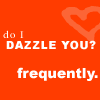


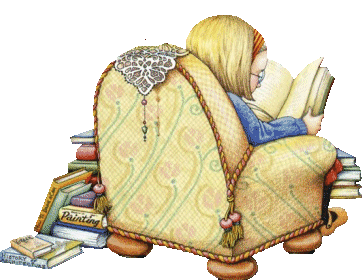
 ____http://classmusicmichaelsne.blogspot.com/
____http://bikecar-michaelsne.blogspot.com/
____http://creatormichaelsne.blogspot.com/
____http://travelmichaelsne.blogspot.com/
____http://hobbymichaelsne.blogspot.com/ ____http://worldmichaelsne.blogspot.com/ ____http://peopleplacesmichaelsne.blogspot.com/
____http://moviesmusicmichaelsne.blogspot.com/
____http://MALAYSIAmichaelsne.blogspot.com/
____http://FOODmichaelsne.blogspot.com/
____http://BEAUTYmichaelsne.blogspot.com/
____http://LOVEmichaelsne.blogspot.com/
____http://EDUCATIONmichaelsne.blogspot.com/
____http://classmusicmichaelsne.blogspot.com/
____http://bikecar-michaelsne.blogspot.com/
____http://creatormichaelsne.blogspot.com/
____http://travelmichaelsne.blogspot.com/
____http://hobbymichaelsne.blogspot.com/ ____http://worldmichaelsne.blogspot.com/ ____http://peopleplacesmichaelsne.blogspot.com/
____http://moviesmusicmichaelsne.blogspot.com/
____http://MALAYSIAmichaelsne.blogspot.com/
____http://FOODmichaelsne.blogspot.com/
____http://BEAUTYmichaelsne.blogspot.com/
____http://LOVEmichaelsne.blogspot.com/
____http://EDUCATIONmichaelsne.blogspot.com/ Blog Archive
-
▼
2009
(20)
- ► 01/25 - 02/01 (10)
- ► 02/15 - 02/22 (1)
- ► 03/01 - 03/08 (1)
- ► 03/29 - 04/05 (6)
- ► 04/26 - 05/03 (1)
About Me

- hongkai lee NICKNAME: MICHAELsne
- Blogging,Blogger,Networking,Food, Travel,Fashion,Music,Cooking,Gardening.Profession:Theologian,Herbalist',lawyer, 35years as Medical Laboratory Technologist in fields of Medical,Pharmacy,Biotechology and Food Sience. Very simple,happy go lucky person and very enthusiatic in betterment of human welfare. Overall inwardly very independent in MY LIVING AND MY THINKING and very articulate about miscarriage of social justice.

